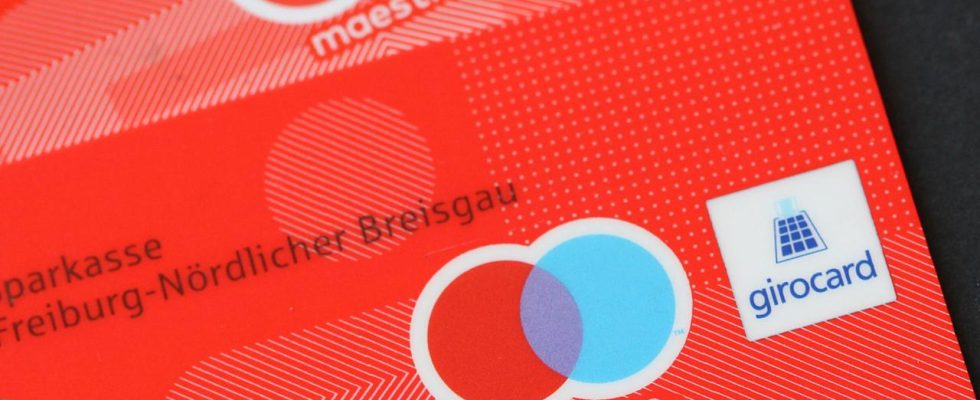Never before have customers in Germany used the Girocard so frequently for cashless payments. They are increasingly paying smaller amounts at the checkout – mostly contactless.
Whether at the bakery, at the gas station or in the supermarket: consumers in Germany used the Girocard more often than ever when making cashless payments last year. The Frankfurt institution EURO Kartensysteme counted 7.48 billion payment transactions with plastic cards. That was 11.5 percent more than in the previous record year of 2022, as shown in the figures published today.
Quick payment in passing is popular
According to the information, customers are increasingly pulling out the card at the checkout even for smaller amounts. That is why the average amount paid with the Girocard fell from 42.34 euros to 40.69 euros within a year. According to the announcement, total sales with the Girocard in 2023 were 304 billion euros, 7.1 percent above the level of the previous year (284 billion euros).
There was a further boost for contactless payment, which retailers promoted for hygiene reasons, especially during the corona pandemic. The proportion of contactless payments with the Girocard, which has still not completely gotten rid of its old name “EC card”, increased from a high level from 79 percent to almost 84 percent.
“Customers are paying more and more frequently at the checkout by holding their card,” said EURO Kartensysteme. Of the approximately 100 million Girocards that banks and savings banks in Germany have issued to their customers, the majority are equipped with the contactless function. According to EURO Kartensysteme, fast payment is technically possible at almost all of the more than 1.1 million payment terminals in stores.
Financial institutions are planning more new applications
Contactless payment can be carried out with debit cards and credit cards that have a so-called NFC chip. You can also transfer money contactlessly using a smartphone or smartwatch with services such as Apple Pay and Google Pay or with banking apps.
The data for processing the payment is exchanged in encrypted form with the terminal at the checkout when customers hold the card, smartphone or smartwatch close to the device. For small amounts, you don’t even need to enter your secret number (PIN).
Banks and savings banks want to upgrade the payment card with additional applications. A possibility is currently being tested to check directly whether the customer is of legal age when paying with the digital Girocard via smartphone or smartwatch, for example when purchasing cigarettes. This could also be used at self-service checkouts in supermarkets.
Girocard is particularly advantageous for smaller businesses
In addition, from 2025 onwards, millions of Sparkasse customers will be able to collect Payback bonus points directly when making cashless payments with their Girocard. The Sparkassen-Finanzgruppe and Payback contractually sealed their collaboration in November.
The Girocard must work in all channels, said Ulrich Binnebößel, head of the Payment Systems & Logistics department at the German Retail Association (HDE). “You have to be omnichannel capable in more and more areas. This is the area in which Girocard still has some catching up to do.”
The Girocard is a particularly attractive payment solution for retailers, explained Binnebößel. “We see that debit cards from international providers cost up to four times higher.” Smaller shops have now also recognized the advantages of the Girocard. “Particularly in industries with low margins, companies use the Girocard as the only card payment method because they benefit from comparatively low transaction costs,” says the HDE expert.

